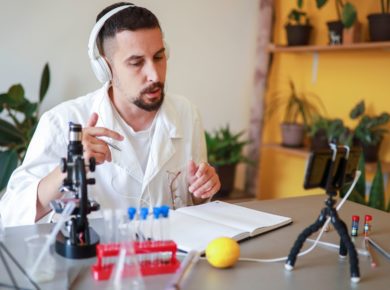How long a pupil can concentrate? When kids are younger, they do not have much focus capacity, but they do as they age. Additionally, neuroscientists confirm that as children age, their average attention span will lengthen. Students frequently have trouble in concentration. Here are some techniques that could aid in boosting the concentration if you see a youngster who frequently drifts off during online or in-person lectures.
Some children will have attention issues. You may do things as a professor to encourage your kids to focus more. For your students to experience a dramatic transformation, all it takes is a little additional effort and thinking on your side.
How long can a pupil concentrate in a school environment?
| Age | Time |
| 4-6 | 10 to 30 min |
| 7-9 | 15 to 45 min |
| 10-12 | 20 to 60 min |
It is often determined by multiplying the age by five minutes.
The ideal delivery of lesson information and the order of activities may be planned by determining the average attention span of the age group you teach. In addition, these techniques can aid in enhancing student focus in the classroom.
Activities in between Lectures
When offered brief active play breaks, kids who have trouble paying attention do better. The attention-challenged youngster can be helped to focus by taking or being given breaks to bounce on an exercise ball, dividing up learning into pieces, scheduling outside playtimes, or offering a brief stretching or jumping jacks break in class. In addition, students will be more engaged and attentive if they spend a few minutes of active play before or between lectures.
Suggested – Top 5 Activities Teacher Can Conduct In Classroom
Short Lectures
To help students focus, divide large lessons into manageable portions while planning them. That does not necessarily imply that you discontinue lecturing about the subject. Instead, you can move between partner work or solo tasks to share the work that has been accomplished with a small group after a group activity, class assignment, or quiz.
To help students shake off the dust and regain their attention, brain breaks should be inserted throughout the school day while classes are kept brief. The typical recommendation is to allow the mind a few minutes of “break” time so it can relax.
Active Games
Students’ ability to concentrate can greatly benefit from including some physical exercises in the classroom. To enjoy the benefits of active games and add more enjoyment to the learning process, use them as a class to practice and review material.
Suggested – Fun Tasks For Students In Online Classes For Improving Problem Solving Skills
Memory Games to Boost Concentration
Students may practice attention fun using memory games, which will help them focus when something difficult is offered. Play memory games with the class at set intervals during the regular school day, or play concentration games with the attention-challenged children outside the usual class period. To promote this activity during downtime, including memory games on the classroom computers.
All ages may enjoy simple memory games. The ability to focus may be improved even with a basic exercise.
Assigning tasks
If you notice a child is constantly avoiding work or seems overly distracted, ask that child to rate the level of challenge found in the activity on a scale of 1 to 10. If the child indicates the activity is an eight or higher, ask what could be done to make the task a two or three. Sometimes, you will get an excellent insight into what you can do to help the student decrease his/her level of frustration.
Question and Answer sessions
The Q&A session does not solely rely on the notes and textbooks. You may establish Q&A sessions on any subjects, where the questions may occasionally be personal or educational. However, not all students will like an educational Q&A session, so attempt to go off-topic to keep them interested and focused.
Remove Distractions
Students are susceptible to distraction. This is because hundreds of thoughts in their head are playing them. Additionally, if actual objects are causing distractions, clear the classrooms of any extra clutter and distracting visuals. This provides the student with fewer reasons to be distracted in class.

Create a Daily Practice Routine
Most of us have to work on our ability to focus; it doesn’t just happen. One of the many advantages of using mindfulness in the classroom is the ability to exercise concentration. Kids may engage in various quick, simple mindfulness exercises that you can add to your everyday routine.
Play some mindfulness activities for a short while if you think the students will benefit from a little additional help focusing and getting the most out of the next learning experience.
You can use many strategies to adjust to your class’s different attention spans. Still, one of the most beneficial would be encouraging inquiry-based, hands-on learning activities that call for critical thinking and problem-solving.
In addition, you may grow with the digital world as it expands with the help of Classplus. Classplus will create an app for you, where you may host your lectures and perform a variety of other tasks, helping you to build your online reputation as a teacher or instructor. Today, make a free trial request.




